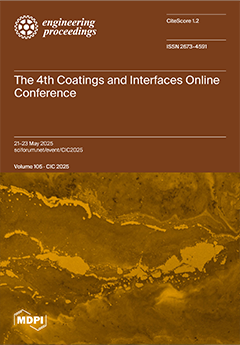Nickel-based alloys, including Inconel 718 and alloy 625, are indispensable in industries such as aerospace, marine, and nuclear energy due to their exceptional mechanical strength, high-temperature performance, and corrosion resistance. However, these very properties pose severe machining challenges, such as accelerated tool wear,
[...] Read more.
Nickel-based alloys, including Inconel 718 and alloy 625, are indispensable in industries such as aerospace, marine, and nuclear energy due to their exceptional mechanical strength, high-temperature performance, and corrosion resistance. However, these very properties pose severe machining challenges, such as accelerated tool wear, poor surface finish, and high cutting forces. Although several studies have investigated coatings, lubrication strategies, and process optimization, a comprehensive and up-to-date integration of these advancements is still lacking. To address this gap, a systematic review was conducted using Web of Science and Scopus databases. The inclusion criteria focused on peer-reviewed journal and conference articles published in the last eleven years (2014–2025), written in English, and directly addressing machining of nickel-based alloys, with particular emphasis on tool coatings, lubrication/cooling technologies, and machinability optimization. Exclusion criteria included duplicate records, non-English documents, papers lacking experimental or modeling results, and studies unrelated to tool life or coating performance. Following this screening process, 101 high-quality articles were selected for detailed analysis. The novelty of this work lies in synthesizing comparative insights across TiAlN, TiSiN, and CrAlSiN coatings, alongside advanced lubrication methods such as HPC, MQL, nano-MQL, and cryogenic cooling. Results highlight that CrAlSiN coatings retain hardness up to 36 ± 2 GPa after exposure to 700 °C and extend tool life by 4.2× compared to TiAlN, while optimized cooling strategies reduce flank wear by over 30% and improve tool longevity by up to 133%. The integration of coating performance, thermal stability, and lubrication effects into a unified framework provides actionable guidelines for machining optimization. The study concludes by proposing future research directions, including hybrid coatings, real-time process monitoring, and sustainable lubrication technologies, to bridge the remaining gaps in machinability and promote industrial adoption. This integrative approach establishes a robust foundation for advancing machining strategies of nickel-based superalloys, ensuring improved productivity, reduced costs, and enhanced component reliability.
Full article




